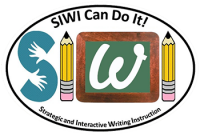Dissertations Developing a Written Language Inventory for Deaf and Hard of Hearing Students: A Systemic Functional Grammar Approach
Kilpatrick, J. R. (2015). Developing a Written Language Inventory for Deaf and Hard of Hearing Students: A Systemic Functional Grammar Approach. Doctoral dissertation, University of Tennessee.
Tags:
assessment,
grammar,
written language
Deaf and hard of hearing (d/hh) students are extremely diverse in language development due to vast differences in residual hearing, response to hearing technologies, and exposure to American Sign Language. Writing is a struggle for these students who have delayed and limited access to English. Studies have found that d/hh students continue to lag behind their hearing peers in syntactic development. Unfortunately, current methods of writing assessment do not provide teachers with sufficient information regarding the syntactic development of d/hh students. This dissertation responds to the need for an assessment that is able to provide this information that is necessary for setting sentence-level objectives and planning developmentally-appropriate instruction.
This project began when I conducted a small pilot study to determine how Systemic Functional Grammar (SFG) analysis could impact teachers ability to set instructional objectives. I conducted a SFG analysis to identify the syntactic structures used by a small group (N=26) of d/hh and hearing 3rd-5th graders. The students were divided into low, mid, and high language proficiency groups and a hearing peer group (N=9) was added. I used the findings of the analysis to construct syntactic structure progression charts to guide teachers in SFG analysis, and four teachers field-tested these charts. The study findings indicated that while SFG analysis can provide teachers with insight into their students’ present level of syntactic development and assist them in setting individual objectives, the time requirements associated with SFG analysis make it an unlikely choice for written language assessment.
The purpose of the current study was to construct a written language inventory that could allow teachers to benefit from the advantages of SFG analysis, without requiring extensive time for training and analysis of samples. Using the pilot study findings, I constructed a draft of the written language inventory. The draft was field tested by 8 teachers of d/hh students in a variety of settings, and a second SFG analysis was conducted to examine the syntactic structures used by a larger, more diverse group of students (N=98). Findings were used to make revisions to the structure and content of the written language inventory.
Read in Full
